Infectious diseases. Later, diseases of the chest and young chronic sick, then geriatric.
The Thurrock Isolation Hospital opened in 1893 with 50 beds. It had cost £5,000 to build and consisted of an administration building, two ward blocks, a laundry and a mortuary.
The Hospital was later enlarged and, in 1898, reorganised.
In 1900 it was agreed that Grays Urban District Council would share management of the Hospital and, in 1901, it was purchased by the newly formed Orsett Joint (with Grays Urban District Council) Hospital Board.
The Hospital was extended twice more, in 1913 and again in 1915, after which it had two large isolation blocks to the west of the administration building, and houses for the Matron and the Sister at the front.
In 1919 a laundry block was added to the site and, later, a TB pavilion - a small weather-boarded building which faced southeast in order to optimize exposure to sunlight. An octagonal-shaped solarium was built in red brick later; it had large windows on its eight walls and a large raised lantern with glazed and frosted glass on its pavilion roof.
In 1936 the Hospital was taken over by the Thurrock Urban District Council. By this time it had 90 beds for infectious diseases cases and 18 beds for male patients with TB.
In 1938 a large 2-storey T-shaped Nurses' Home was built by the western entrance of the Hospital.
At the outbreak of WW2 in 1939 the Hospital became part of the Emergency Medical Service. It had 104 beds.
In 1948 it joined the NHS as the Thurrock Infectious Diseases Hospital under the control of the South East Essex Group Hospital Medical Committee, part of the North East Metropolitan Regional Hospital Board. It continued in use as an infectious diseases and TB hospital with 111 beds. It was also the headquarters of the Hospital Management Committee until the early 1970s, and of the Nurses' Training School (until 1967).
In 1951 it had 51 beds.
In 1966, following a minor reorganisation of the NHS, it came under the auspices of the Tilbury and South East Essex Group Hospital Management Committee. It had 81 beds for patients with chest disease and for care of the young chronically sick.
In 1970 it had 81 beds.
In 1974, following a major reorganisation of the NHS, the Hospital came under the control of the Basildon and Thurrock District Health Authority, under the Essex Area Health Authority, part of the North East Thames Regional Health Authority. It had 76 beds. By 1979 the number had increased to 81 beds.
Following another major reorganisation of the NHS in 1982, the Hospital remained under the control of the Basildon and Thurrock District Health Authority. It had 100 beds for geriatric and psychiatric patients, and young chronically ill long-stay patients.
In 1990 the Hospital had 115 beds.
With the introduction of the 'market place' system in the early 1990s, the Hospital joined the Thameside Community Healthcare NHS Trust in 1992.
By 2001 it had become the Thurrock Community Hospital with two wards for elderly people - Meadowview Ward which provided a specialist mental health assessment service and Mayfield Ward for continuing mental health care. The John Tallock Centre, a day hospital for the elderly, had been built in its grounds. Services were provided by the South Essex Mental Health and Community Care NHS Trust.
In 2008, when the South West Essex Primary Care Trust faced making financial savings in the care for elderly patients with mental health problems, one of its wards - Mayfield Ward - was threatened with closure. In the event, it was consolidated with Meadowview Ward.
A new Mayfield Unit was officially opened on 11th June 2017 by Cllr Sue Little, refurbished from the former 32-bed Alastair Farquharson Centre (for in-patient rehabilitation and stroke care). The unit has 24 beds for adults and those with dementia.
Present status (September 2017)
The Hospital is still operational. Ward pavilions to the west and the north have been demolished and replaced by modern facilities, but most of the original buildings remain.
The site contains an administration block, the Alistair Farquharson Centre, a Child Development Centre, the Freeman Centre, Gifford House, the Ashingdon Unit, Thamesside House, the Mayfield Unit, the Meadowview Unit, the Jubilee Day Unit, a Wheelchair Centre, the Thurrock Memory Clinic, the Cherry Tree Garden, Daycott House and the John Tallack Centre (which houses the South Essex Emergency Doctors Service).
Following a plethora of Trusts providing community and mental health care services at the Hospital over the years, today they are provided by the North East London NHS Foundation Trust and the Essex Partnership University NHS Foundation Trust.

The main entrance is on the west side by the new buildings.
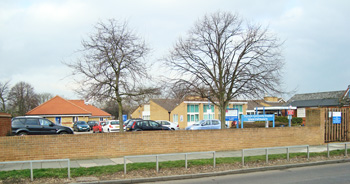
The modern buildings, as seen from the west.
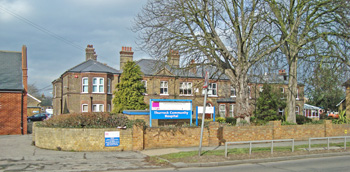
Original buildings along Long Lane (above and below).
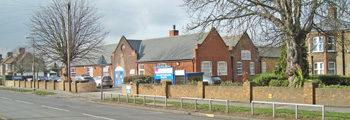
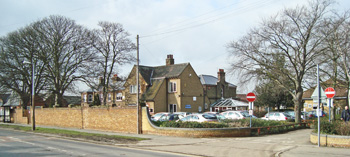
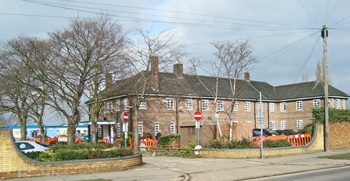
The 1938 Nurses' Home, now Thameside House, on the east of the site.
Feehan K 2017 New Thurrock hospital unit for patients needing re-ablement unveiled at official opening. Thurrock Gazette, 24th June.
http://discovery.nationalarchives.gov.uk
http://seax.essexcc.gov.uk
http://unlockingessexcc.gov.uk
www.bbc.co.uk
www.british-history.ac.uk
www.echo-news.co.uk
www.nelft.nhs.uk
www.pubshistory.com
www.thurrock.gov.uk
www.thurrockgazette.co.uk
www.thurrockindependent.com
Return to home page